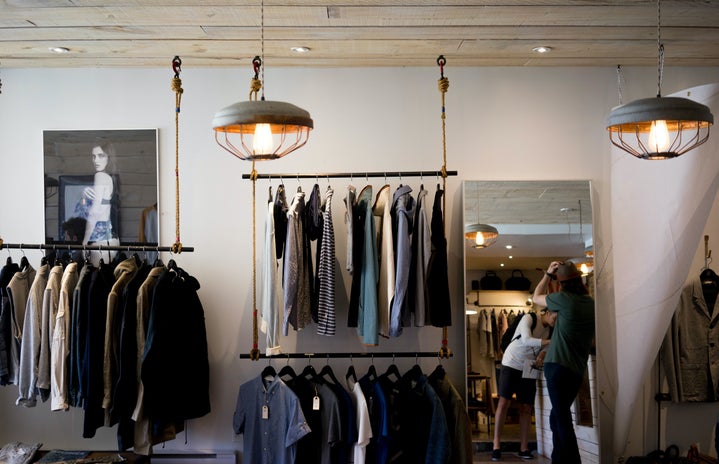Sustainable fashion is so much more accessible than you would think. The key to curating an eco-friendly wardrobe lies in the mantra that you learned in elementary school: reduce, reuse and recycle. By buying less, integrating pre-loved pieces into your closet and repurposing worn-out clothing, you can significantly reduce your environmental impact.
Habit 1: Reduce
The logic here is simple. The less you buy, the less you waste. Challenge yourself to shop more methodically: instead of succumbing to flashy internet sales and trend FOMO, take inventory of the pieces you already have, visualize the outfits you would like to try and evaluate trends for longevity. I suggest writing yourself a shopping list with one column for basics and another for trends that you hope to try out. This will help you slow down and give each purchase careful consideration. To combat impulsive buying habits, unsubscribe from marketing emails and texts and limit your shopping to items you can see yourself styling two or more ways. When you do shop, make sure to buy clothing that lasts! Choose sturdy, easy-to-clean fabric and flattering, classic cuts. Also make sure to avoid overwashing and hang-dry more temperamental pieces.
Habit 2: Reuse
To extend the life of your clothing, take the time to learn basic tailoring. Knowing how to reattach a button, hem jeans and patch holes will allow you to maximize the value of each piece all while minimizing your environmental impact. Should you find yourself growing tired of your wardrobe, explore secondhand shops! Thrifting opportunities are abound in LA, but if you would prefer to shop from a curated selection, you can always download Depop, an app that lets people buy, sell and trade pre-loved clothing.
Habit 3: Recycle
If a piece is reaching the end of its life or has taken up permanent residence in the back of your closet, the best thing you can do is find it a new home. Donate old clothing to Goodwill, or try your hand at selling online. You can also repurpose parts like buttons, ribbons, and embroidery for sewing projects and accessories.
Despite the daunting scale of the climate crisis, it is crucial to remember that change begins at the individual level. As consumers, we have the power to fight fast fashion, reduce waste and protect the health of our planet. Accordingly, let us commit to standing up for our futures.



